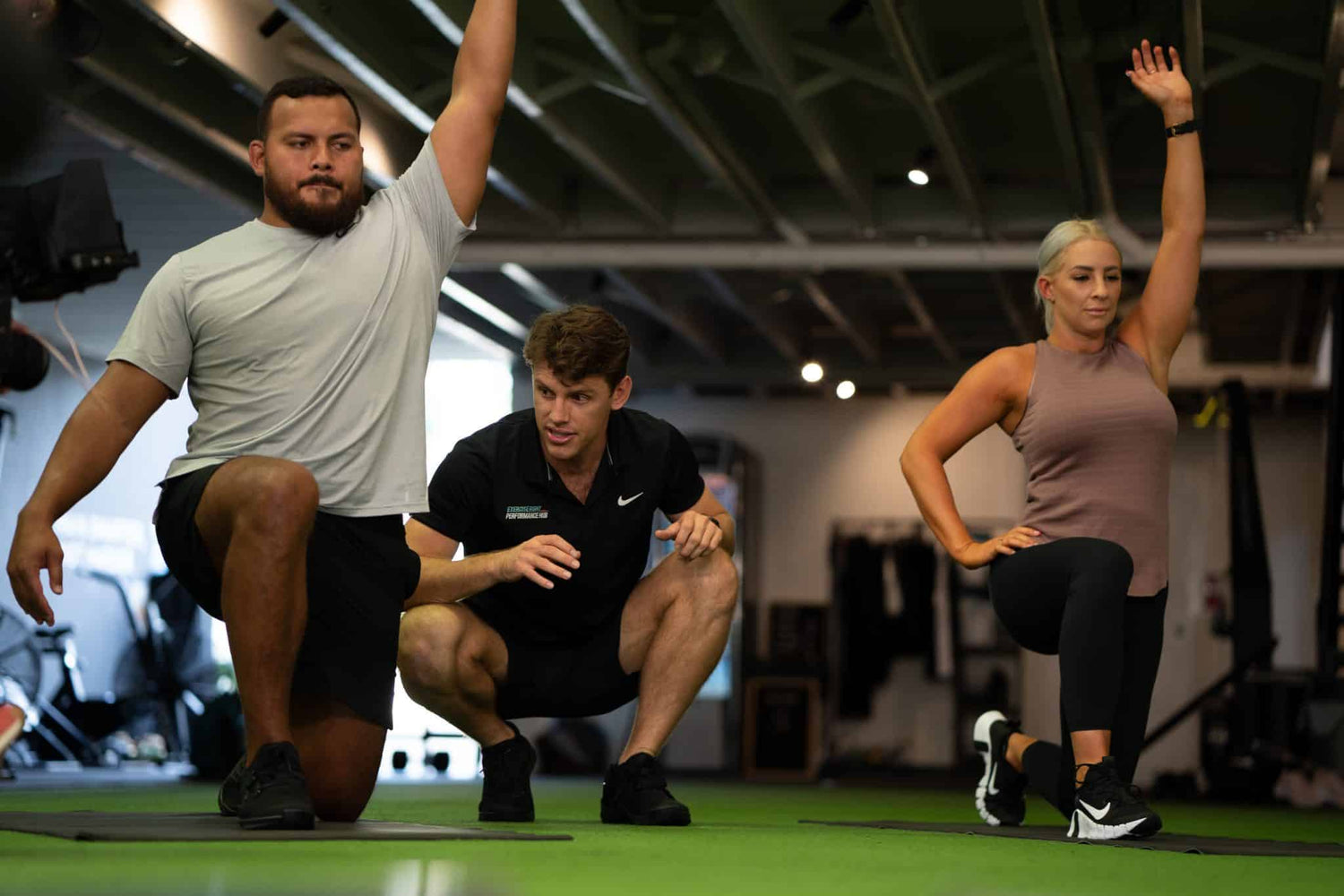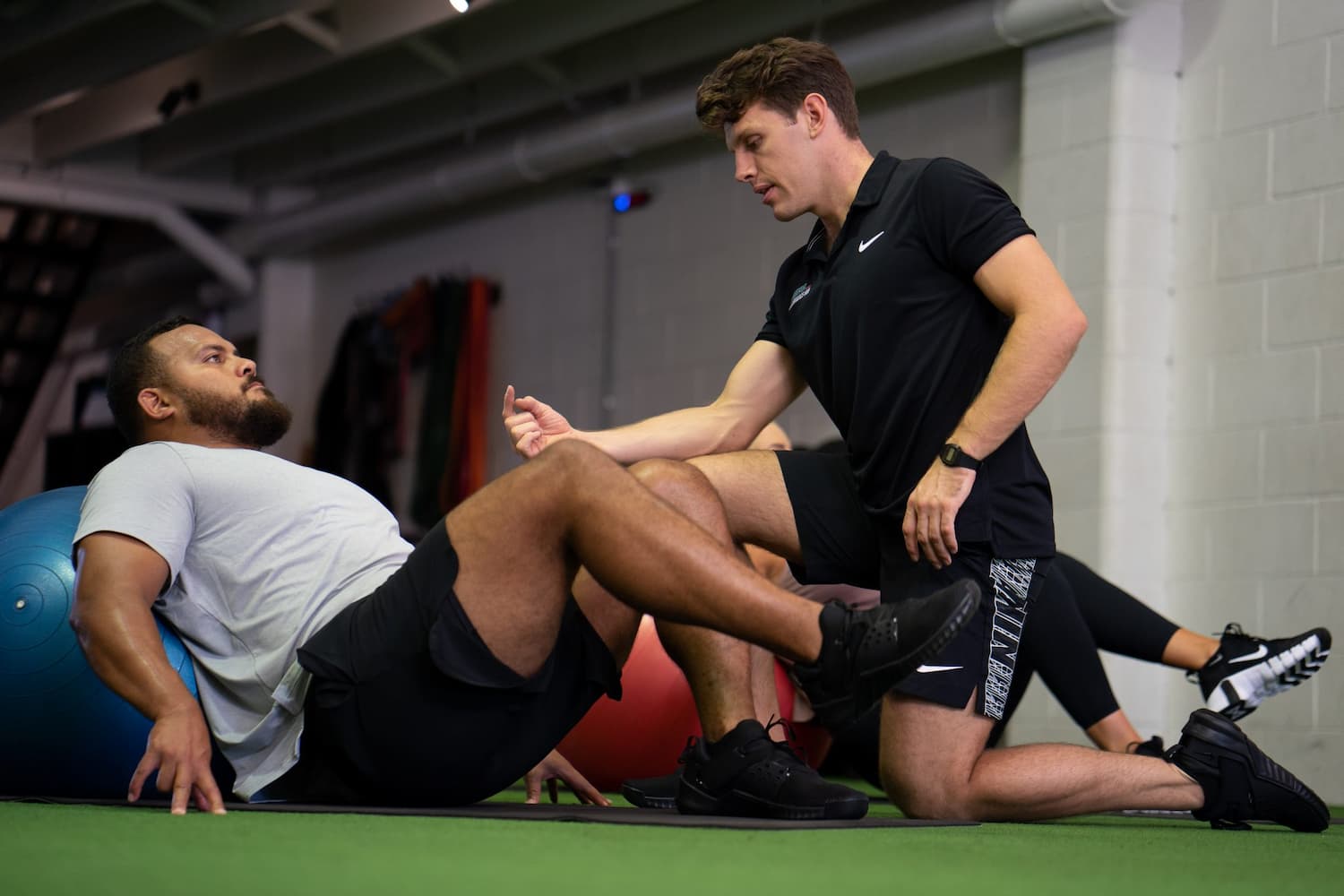This post was originally published by Exercise Right in collaboration with Peter Fowler from The Recovery Project. The original post can be read here.
The Recovery Specialist
Peter has fifteen years of experience working in high-performance sport in England, Qatar and Australia. He has worked in the English Premier League with Tottenham Hotspur Football Club, within the Department of Physiology at the Australian Institute of Sport, and with several football clubs in the Australian A-league.
Peter also has a PhD in Sleep and Recovery in Elite Athletes and has engaged in cutting-edge research focused on developing practical interventions for athletes to improve recovery at Aspetar Sports Medicine Hospital in Qatar.
During his time in Qatar, Peter also acted as a consultant to many elite athletes, clubs and organisations, including the English Premier League, Rugby Sevens World Series, NRL, NFL and McLaren F1 team. Peter also provided his services to the Qatar Olympic team and Football Association.
In 2019, Peter opened The Recovery Room on the Sunshine Coast, which allowed him to share recovery technology, equipment and education at levels with the general public (usually reserved for elite athletes) to help them achieve their life, health, fitness and sporting goals.
Peter’s only frustration with The Recovery Room was that the number of people who could access the equipment and knowledge was limited to mainly those living on the Sunshine Coast. That is why he has now gone online and launched The Recovery Project, where he is on a mission to ensure that a high level of recovery equipment and knowledge is accessible to anyone.
Want to maximise your training outcomes? Listen to what Dr Fowler has to say about recovery below.
What is Recovery?
Before we delve into the nitty gritty of which recovery interventions are best, let’s all get on the same page about what recovery is and what are some of the key concepts.
In a nutshell recovery is…
“Physical and mental restoration to be able to perform again at the level that is required.”
In the short-term, when we apply a stressor, we temporarily become more fatigued, and our performance reduces.
When we remove that stressor, a period of recovery follows. During the recovery period is where the magic happens, it’s where we get all the adaptations and improvements as a result of applying that stressor.
If we take the example of strength training as our stressor, then during the exercise we get tiny tears in our muscle fibres, which reduces our performance. These tiny tears are also what cause Delayed Onset Muscle Soreness or DOMS (see table below for Key Concept 1 – Delayed Onset Muscle Soreness).

However, in the recovery period, the body brings in beneficial molecules to help repair those tiny tears in the muscle, which results in inflammation (yes, in general, inflammation is good – see above table for Key Concept 2 – Inflammation) and in turn, increases the size of our muscle and gives us a temporary improvement in performance (also known as “adaptation” – see table above for Key Concept 3 – Adaptation).
So, think of it this way, it’s not during the exercise itself where you get fitter, faster and stronger, it’s during the recovery process where this happens. So, if you invest in your recovery, then you can get more bang for your buck from your training.
Over the long-term, if we balance our stress and recovery scales, and allow adequate time for recovery in between applying stress to the body, what we get is the additive effects of all those small improvements.
Going back to the strength training example, if we get small improvements in muscle size from each session, then over the long-term this increases our muscle strength and improves our performance.
By undertaking proactive recovery strategies after training, we can enhance the recovery process, which allows us to:
1. Apply more stress, more frequently which drives more adaptations and improvements
2. Improve the adaptations/outcomes each time you apply a stressor
3. Go into the next training session feeling less fatigued, which reduces your risk of injury and illness
Therefore, overall, it allows us to get greater improvements in performance over time.
On the other hand, if your stress and recovery scales are balanced in favour of stress, this can reduce the adaptations and improvements you get from each stressor and instead results in prolonged fatigue and reduced performance.
Overtraining Syndrome or Unexplained Underperformance Syndrome is where the stress of training no longer promotes adaptation and instead causes prolonged fatigue. This, unlike the name suggests, is not caused by too much training, but by insufficient recovery.
Is Recovery undervalued?
Despite the benefits of being proactive with your recovery and though it is something that is gaining more traction, unfortunately it does still tend to be overlooked.
In elite sport, there are so many different commitments and obligations outside training and competing (e.g., media, sponsors, fans) and as a result, recovery is often the first thing that is compromised.
The same “lack of time” problem exists for the amateur, yet serious, athlete who is often balancing training and competing with work and family commitments.
Though it is slowly changing, there also tends to be a “go hard or go home” mentality within society, whereby those who are always doing more and more in training or are first in and last out of the office are heralded as more likely to be “successful”.
However, with this mindset, quantity is prioritised over quality and stress is prioritised over recovery, which as previously mentioned is more likely to result in burnout.
Lastly, younger athletes also tend to overlook recovery because at that age they can get away with it a bit more. Unsurprisingly, as you get older, like so many other physiological functions, the body’s ability to repair and regenerate itself diminishes.
However, speaking to older athletes reflecting on their careers, you’ll often hear them say that they didn’t pay too much attention to recovery, to begin with. But, as they progressed through their career, they noticed that those athletes that have the longest careers were the ones that looked after their bodies, which then changed their mindsets and made them focus more on recovery.
Is recovery undervalued?
Despite the benefits of being proactive with your recovery and though it is something that is gaining more traction, unfortunately it does still tend to be overlooked.
In elite sport, there are so many different commitments and obligations outside training and competing (e.g., media, sponsors, fans) and as a result, recovery is often the first thing that is compromised.
The same “lack of time” problem exists for the amateur, yet serious, athlete who is often balancing training and competing with work and family commitments.
Though it is slowly changing, there also tends to be a “go hard or go home” mentality within society, whereby those who are always doing more and more in training or are first in and last out of the office are heralded as more likely to be “successful”.
However, with this mindset, quantity is prioritised over quality and stress is prioritised over recovery, which as previously mentioned is more likely to result in burnout.
Lastly, younger athletes also tend to overlook recovery because at that age they can get away with it a bit more. Unsurprisingly, as you get older, like so many other physiological functions, the body’s ability to repair and regenerate itself diminishes.
However, speaking to older athletes reflecting on their career, you’ll often hear them say that they didn’t pay too much attention to recovery to begin with. But, as they progressed through their career, they noticed that those athletes that have the longest careers were the ones that looked after their bodies, which then changed their mindsets and made them focus more on recovery.

What are the 'Big Rocks' of Recovery?
The recovery space can be confusing with lots of different interventions available. However, there are some key things that you should be focusing on first to make sure you get the most bang for your buck from your recovery.
THE 4 R’S OF RECOVERY:
1. Rehydrate
Replace fluid loss and fix electrolyte imbalance (sodium). Aim to replace 150% of the fluid you have lost in the first 4 h after exercise e.g., 1 kg fluid lost = 1.5 L fluid.
2. Refuel
Replenish your muscles energy stores with adequate carbohydrate intake (0.8-1.2g/kg of body weight) in first 4 h post-exercise e.g., 75 kg = 60-90 g of carbohydrate.
3. Rebuild
Repair your muscles with adequate protein intake – 1.2-2.0g/kg/day e.g., 75 kg = 90-150g of protein.
4. Rest
Make sure your body gets adequate rest by aiming to sleep 7-9h per day (athletes may require more) and include other types of rest e.g., napping, meditation, yoga, etc.
Note: If you’re sleeping 7-9 h per night, but still feeling excessively fatigued during the day, then it is likely that you’re not getting enough of the other types of rest.
If you have a quick (i.e., 1-6h) turnaround between training sessions or competitions, then focus on 1 and 2 (Rehydrate and Refuel).
THE 3 “BIG ROCKS” OF RECOVERY ARE:
1. Sleep
No amount of time in an ice bath or wearing compression garments will replace a good night of sleep. It really is the best physiological and psychological recovery tool we have and it’s free!
2. Nutrition
3 of the 4 R’s of Recovery are nutrition related, so seek out a suitably qualified sports dietitian and make sure you have a plan post-training to ensure you have the right balance of macronutrients in your diet for subsequent training sessions.
3. Rest
Not enough emphasis is placed on social or mental recovery. It is important that you get away from your sport and spend time having fun with family and friends. Sometimes sport can be monotonous, so breaking up the routine and having some fun can be just what is needed to refresh and revitalise you.
As you can see from the infographic below, the next piece of the puzzle is your training program, because if you get this wrong, then no amount of recovery will be able to save you!
Make sure you seek out a suitably qualified coach and/or strength and conditioning coach to get this right for you.

The final level is all other recovery modalities.
These can be beneficial in certain scenarios, but to get anything out of them, you need to make sure that the other parts of the pyramid are taken care of first. For example, there is no point in having an ice bath after training if your sleep and nutrition are terrible!
The other thing to consider with these “other recovery modalities” is how they might be able to assist the 3 ‘big rocks’ of recovery. For example, if an ice bath can be used to reduce muscle soreness, this may aid sleep, you could also kill two birds with one stone by doing some mental recovery whilst using compression boots or sitting in sauna, etc.




Leave a comment
All comments are moderated before being published.
This site is protected by hCaptcha and the hCaptcha Privacy Policy and Terms of Service apply.